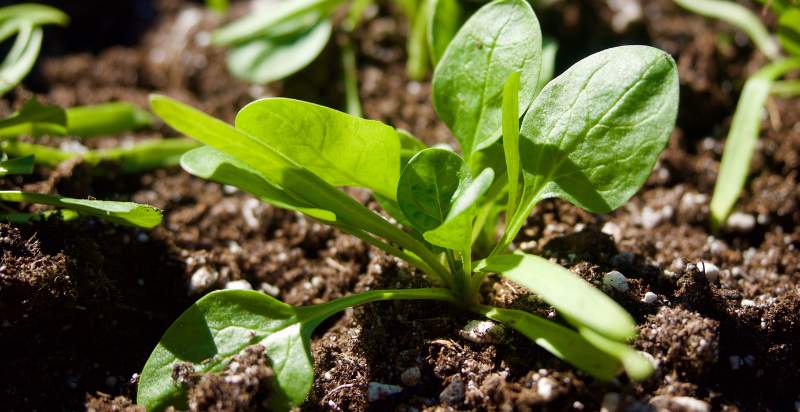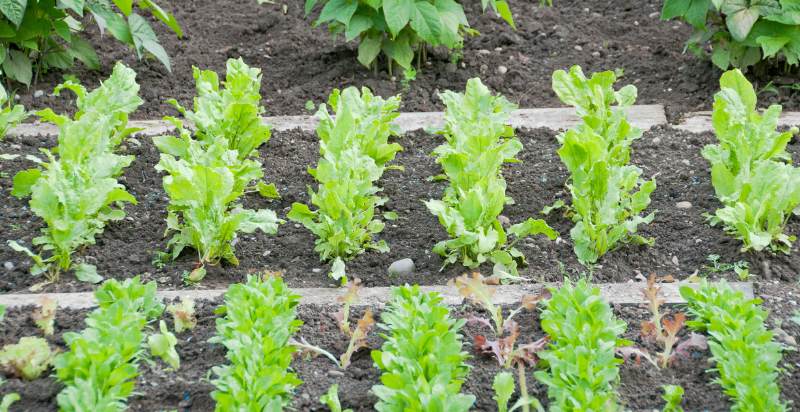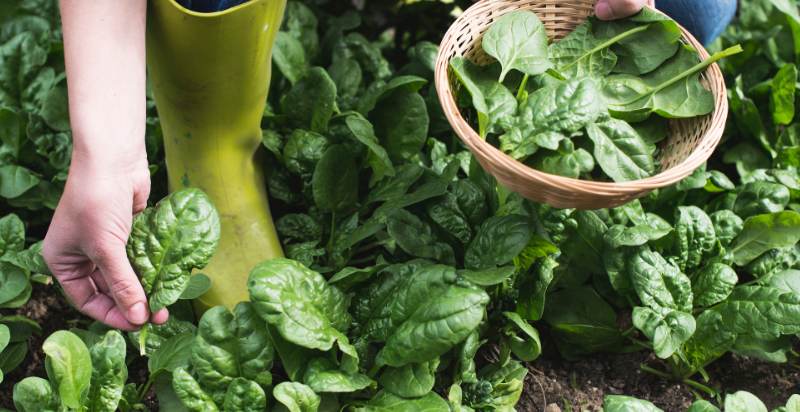Spinach is a nutrient-packed green that belongs to the family of Amaranthaceae. It is high in vitamins A, C, K, and folate and contains calcium, magnesium, iron, and potassium. Spinach is also a great source of dietary fiber and protein. In addition to its nutritional properties, spinach has been used medicinally for thousands of years and holds many potential health benefits. Everything you need to know about this superfood is right here!
What is Spinach?
Spinach is a leafy green plant native to Asia and the Mediterranean. It is cultivated for its edible leaves, which are high in vitamins and minerals such as vitamins A, C, K, folate, calcium, magnesium, iron, and potassium. Spinach also contains dietary fiber and protein. It is an annual plant that requires full sun or partial shade for optimal growth. Spinach can be eaten raw or cooked in various dishes, from salads to smoothies.
History and Origin of Spinach:
Spinach has been consumed since ancient times, with records indicating its cultivation dating back over 2000 years in Persia (Iran). During the Middle Ages, it made its way throughout Europe, where it was cultivated primarily as an ornamental plant due to its beautiful leaves. Today spinach is widely grown worldwide, particularly in the United States, China, and India.
Nutritional Profile of Spinach:
Spinach is a nutrient powerhouse and is especially high in vitamins A, C, and K, as well as folate. It also contains numerous calcium, magnesium, iron, and potassium minerals. Additionally, spinach is a great source of dietary fiber and protein.
Health Benefits of Spinach:
The plethora of nutrients found in spinach provides numerous benefits to health. The high vitamin content helps support eye health by reducing the risk of age-related macular degeneration and providing antioxidant protection to combat free radical damage that can lead to cancer or other diseases.
Vitamin K helps with blood clotting, while folate has been linked to congenital disability prevention among pregnant women. Calcium and magnesium play a role in bone health, and the many minerals in spinach help maintain electrolyte balance. Additionally, the dietary fiber found in spinach helps promote regularity and healthy digestion.
How to Plant Spinach?
Spinach is a nutritious and delicious vegetable easily grown in many climates. With the right knowledge and some effort, you can have a flourishing spinach garden of your own! This guide will provide all the information you need to know about successfully planting, growing, and harvesting spinach.
Choosing the Right Spinach:
When deciding which type of spinach to plant, there are several things to consider. Some spinach grows better in warm temperatures, while others thrive in cooler climates. Additionally, different varieties vary in taste and texture, so it’s important to look for one that tastes best for you. It’s also important to pick a variety known for being disease-resistant, as this will help ensure a good crop.
Preparing the Soil:
Once you’ve chosen a variety, it’s time to prepare the soil. Spinach prefers soils that are high in organic matter and well-drained. Create raised beds or incorporate sand into your planting area to ensure proper drainage. Additionally, spinach likes plenty of sunlight, so choose an area with at least 6 hours of direct sunlight per day. Once your soil is prepared, mix in a good amount of compost or fertilizer to give the plants the extra nutrition they need to grow and thrive.
Planting Spinach:
Now it’s time for planting! Planting spinach seeds can be done either directly in rows or by transplanting seedlings you’ve started indoors. If you’re planting directly in rows, space the seeds 1-2 inches apart and cover them lightly with soil. Make sure to keep the soil moist for the seeds to germinate. If you’re transplanting seedlings, be gentle when handling them, as they can easily become damaged. Plant the seedlings 3-4 inches apart and water regularly after transplanting.
Once your spinach is planted, it’s important to provide proper care to grow healthy and strong. Water your spinach regularly – about 1 inch per week – making sure not to overwater or let the soil dry out too much. Additionally, it would help to fertilize your spinach every 3-4 weeks with a balanced fertilizerco. Be sure to remove any weeds that may begin to grow, as these can steal nutrients from the spinach plants.

How to Care for Spinach?
Once your spinach is established, there are a few important tips for keeping it healthy and strong:
- Make sure to rotate the location of your spinach plants every year; this will help prevent diseases or pests from becoming too prevalent in one area.
- It would help if you mulched around the base of each plant to conserve moisture and discourage weeds.
- It’s important to harvest spinach regularly for new plants to grow.

Preventions from Pests and Diseases:
Although spinach is generally a hardy plant, some pests and diseases can still affect your crop. Some of the more common pests include slugs, aphids, and cutworms. To avoid these pests, using row or floating row covers is important to protect your plants. Additionally, it would be best to clean up any plant debris in the garden, as this can create ideal conditions for pests and diseases to thrive.
Harvesting Spinach:
Once your spinach plants have grown mature, it’s time to harvest! You can begin harvesting baby spinach leaves once the leaves are at least 2 inches long. For mature spinach leaves, wait until the leaves are at least 3 inches long before harvesting. Be sure to check your plants regularly and harvest any leaves that may be ready – this will ensure a continuous supply of fresh spinach!
You can successfully grow your own spinach crop with proper care and attention. Remember these tips and enjoy the delicious rewards of a healthy spinach harvest.

How to Store Homegrown Spinach?
Once you’ve harvested your spinach, it’s important to store it properly to stay fresh. The best way to store fresh spinach is by wrapping it in a damp paper towel and placing it in an airtight container or bag before refrigerating. This will help preserve the leaves moisture and keep them from wilting.
Fresh spinach should last about 5 days in the refrigerator. If you have too much spinach to consume within this timeframe, you can freeze it for future use. To do so, blanch the leaves before freezing and store them in airtight containers or bags in the freezer.
How to Use Spinach?
Spinach is a versatile vegetable that can be used in many different dishes. Its mild flavor and tender texture make it perfect for salads, soups, stews, sandwiches, pasta dishes, and more! For an easy side dish, try sautéing spinach with olive oil and garlic or adding it to scrambled eggs for a nutritious breakfast.
For a heartier meal, try adding spinach to lasagna or making a creamy dip for your next party. No matter how you choose to use it, you can be sure that adding spinach to any dish will add essential vitamins, minerals, and antioxidants.
So now that you know how to grow and store homegrown spinach, start experimenting with different recipes and see what delicious dishes you can create.

Potential Risks from Spinach:
Although spinach is generally a very healthy vegetable, there are still some potential risks that you should be aware of. Spinach contains oxalates which can interfere with the absorption of calcium and other minerals in your body if consumed in large amounts. Additionally, if not properly washed and stored, spinach may contain harmful bacteria such as E. Coli or Salmonella. To avoid potential risks, always thoroughly wash all produce before consuming and follow the recommended guidelines for storing fresh spinach.
By understanding these potential risks and taking the necessary precautions, you can still enjoy the delicious health benefits of homegrown spinach while keeping your family safe.
Conclusion:
Growing your spinach is a great way to enjoy the health benefits of this nutritious vegetable. With proper care and attention, you can successfully grow a healthy and delicious harvest that you can use in various recipes. Just remember to thoroughly wash all produce before consuming and take the necessary precautions when storing fresh spinach to ensure it remains safe for consumption. Enjoy the rewards of homegrown spinach, and happy harvesting!
Happy Growing!
- Everything You Wanted to Know About Red Tamarillos - June 2, 2025
- A Guide to Tulips: Everything You Need to Know & More… - June 2, 2025
- Guanabana: Description, Flavor, Benefits, And Uses - May 27, 2025

16 thoughts on “What is Spinach? How to Plant, Grow, and Harvest Spinach”
Comments are closed.